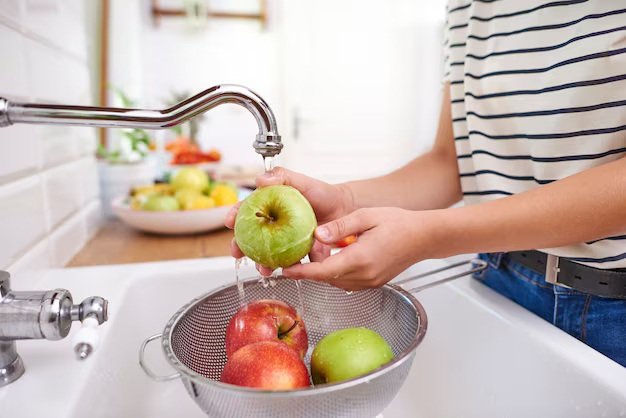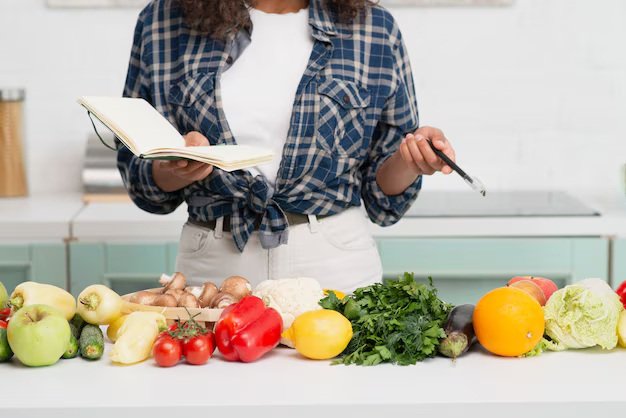10 Eco-Friendly Food Packaging Materials to Reduce Plastic Waste
As consumers’ preferences increasingly prioritise sustainable food packaging alternatives, businesses are adapting to meet the demand for plastic-free packaging. The shift toward eco-friendly packaging is more than just a trend—it’s a response aimed at reducing plastic pollution caused by unsustainable packaging practices.
Brands’ reliance on plastic as a packaging option has contributed to an environmental crisis. Landfills are filled with plastic waste, and the oceans are similarly affected. Our planet is choking on millions of tons of petroleum-based plastic waste that is poorly disposed of every year. Businesses will continue their unsustainable plastic packaging practices unless consumers demand sustainable alternatives to drive change.
Consumers are in a powerful position to push for sustainable packaging. If the sustainability movement is widely embraced, brands will have no choice but to meet the demand for eco-friendly packaging to remain competitive. It’s now or never to make the right choices and reduce plastic waste and pollution through sustainable packaging options.
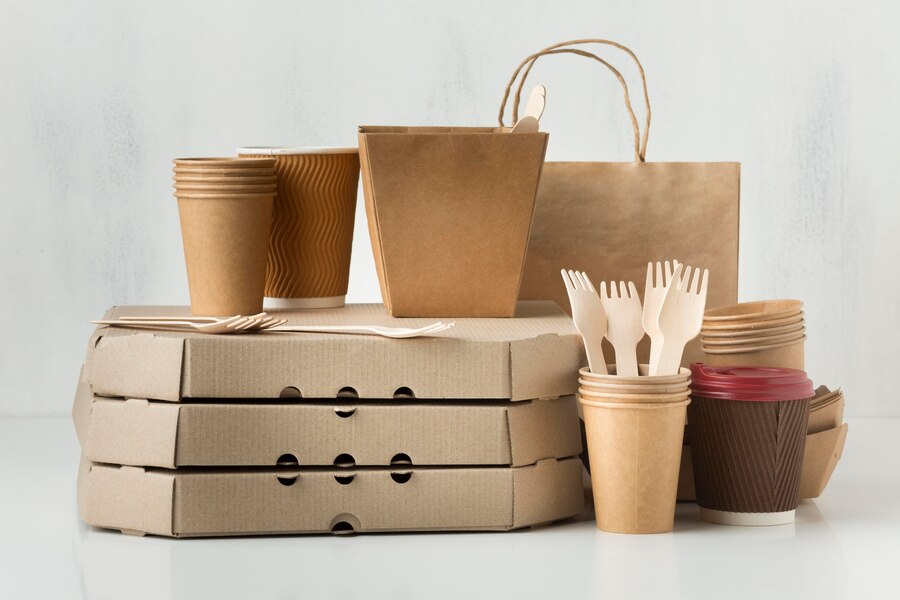
In This Article
- What Is Eco-Friendly Packaging?
- The Importance of Eco-Friendly Packaging
- Eco-Friendly Packaging Materials
- Key Considerations for Businesses Transitioning to Eco-Friendly Packaging
- Global Trends and Regulations-Driven Eco-Friendly Packaging
- Conclusion: A Path Forward for Sustainable Packaging
What Is Eco-Friendly Packaging?
Eco-friendly packaging, or “green packaging,” refers to materials designed to minimise environmental impact. Green packaging is environmentally friendly, with material options that are biodegradable, compostable, or entirely plant-based. Eco-friendly packaging options are sustainably manufactured using energy-efficient processes.
According to Tom Szaky, CEO of TerraCycle, during an interview with the World Economic Forum, “Eco-friendly packaging has the power to revolutionise industries and significantly reduce environmental damage. We need to focus on materials that not only reduce waste but also contribute to a circular economy.”
The Importance of Eco-Friendly Packaging
Plastics are lightweight and preferred for food packaging due to their durability and flexibility. However, the decision by companies to use this petroleum-based material comes with a downside. Plastics are non-biodegradable and take an extremely long time to decompose—they persist in the environment, breaking down into microplastics that eventually enter the food chain. Pollution from plastic waste causes irreparable harm to aquatic ecosystems and poses health risks to humans.
Low-density polyethene (LDPE), polyvinyl chloride (PVC), and polystyrene are types of plastics commonly used in food packaging. According to a study published in Environmental Science & Technology, chemicals like BPA (Bisphenol A) and phthalates from plastics have been found in 90% of the U.S. population. Traces of these chemicals in the human body can potentially disrupt hormones and increase the risk of health issues.
Key Statistics
According to a 2021 study by Eurostat, 188.7 kilograms (416.01229 pounds) of packaging waste were generated per person in the EU, with food packaging accounting for a large portion of it.
In 2020, the global packaged food market was valued at $1.9 trillion. By 2030, the market is expected to be valued at $3.4 trillion.
Learn More: 5 Best Eco-Friendly Disposable Cutlery Options
Eco-Friendly Packaging Materials
The packaging industry continues to generate millions of tons of plastic waste. However, sustainable alternatives to plastic packaging are emerging. Here, we explore ten eco-friendly materials that can replace plastic and reduce waste:
#1. Mushroom Packaging
Mushroom packaging is a viable alternative to replace single-use plastics. The material is made from mycelium, the root-like structure of fungi. Mycelium binds agricultural waste, such as corn stalks and husks, together to create a biodegradable and compostable material. It naturally decomposes within 1 to 3 months, leaving no harmful residue behind.
Benefits
- Biodegradable: Mushroom packaging is 100% biodegradable and safe for the environment.
- Durable: The material can be moulded into various shapes, making it suitable for different packaging needs.
- Low Energy: The production process of mycelium-based materials consumes less energy compared to petroleum-based plastics.
Challenges
- Limited Availability: While eco-friendly and rapidly gaining popularity, mushroom packaging is not yet widely available, and scaling up production could be challenging.
- Cost: Mushroom packaging can be more expensive than conventional plastics. However, large-scale production may help reduce costs over time.
Case Study: IKEA
According to reliable sources, IKEA, the world’s largest furniture retailer, is one of the leading brands using mushroom-based packaging for shipping materials. The company has chosen this eco-friendly option to reduce its reliance on non-biodegradable plastics and Styrofoam.

#2. Corn Starch Packaging
Corn starch packaging is 100% plant-based and a biodegradable alternative to traditional plastics. The material is derived from corn kernels, making it safe to use as both a food container and a packaging option.
Benefits
- Biodegradable: Corn starch naturally breaks down much faster than conventional plastics. It is non-toxic and safe for food packaging.
- Versatile: This plant-based material can be used in various food packaging applications, from cutlery to takeout containers.
- Non-Toxic: Safe for food contact, it is a non-toxic material ideal for businesses transitioning to sustainable packaging options.
Challenges
- Resource-Intensive Production: Corn production is resource-intensive—it requires a large amount of water and other agricultural resources.
- Decomposition: Although corn starch is biodegradable, it requires specific composting conditions that may not be available everywhere.
Market Insight
Consumer demand for eco-friendly packaging materials like corn starch is rapidly growing due to increased regulatory pressures on single-use plastics. In the EU, legislation such as the Single-Use Plastics Directive leaves businesses with no choice but to adopt sustainable alternatives.
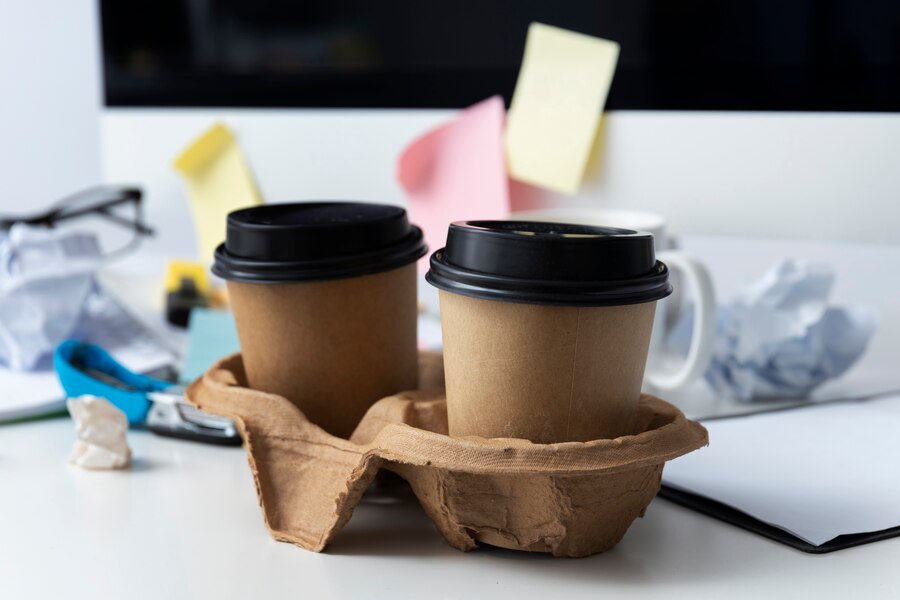
#3. Water-Soluble Packaging
Water-soluble packaging made from starch derivatives like polyvinyl alcohol (PVA) dissolves in water, making it a suitable option for reducing packaging waste. This type of packaging is often used in industries such as pharmaceuticals and cleaning products, and it has recently gained popularity in the food packaging industry.
Benefits
- Biodegradable: Easily dissolves in water, leaving no waste behind.
- Non-Toxic: Free of toxins, safe for both the environment and human health.
- Ideal for Single-Use Items: Suitable for packaging soluble products like instant soups, seasonings, or powdered beverages.
Challenges
- Moisture Sensitivity: Since the material easily dissolves in water, it is unsuitable for packaging moist or liquid-based foods.
- Limited Applications: Water-soluble packaging is currently limited to specific product categories that do not involve exposure to liquids.
Innovative Use
The Indonesian company Evoware is committed to revolutionising the packaging industry with its water-soluble packaging options for food and beverage products.
Learn More: 10 Best Eco-Friendly Alternatives to Ziploc Bags for a Greener Home
#4. Seaweed Packaging
Seaweed is another sustainable food packaging option. It’s a renewable resource that is currently being used as an alternative to plastic due to its biodegradability. Seaweed-based packaging is edible and water-soluble.
Benefits
- Abundant Resource: Seaweed is plentiful and grows rapidly without requiring land space or freshwater.
- Edible: In some applications, seaweed-based packaging can be consumed along with the food, completely eliminating waste.
- Biodegradable: Seaweed is 100% biodegradable and decomposes much faster than conventional plastics.
Challenges
- Cost: Extracting and producing seaweed-based packaging is more expensive than petroleum-based plastics.
- Scaling: Like other eco-friendly packaging options, scaling up production to meet global demand presents logistical challenges.
Case Study: Notpla
London-based start-up Notpla uses seaweed to create a variety of biodegradable and edible packaging products, such as drink pouches and condiment sachets. These products have been used at major events like the London Marathon.
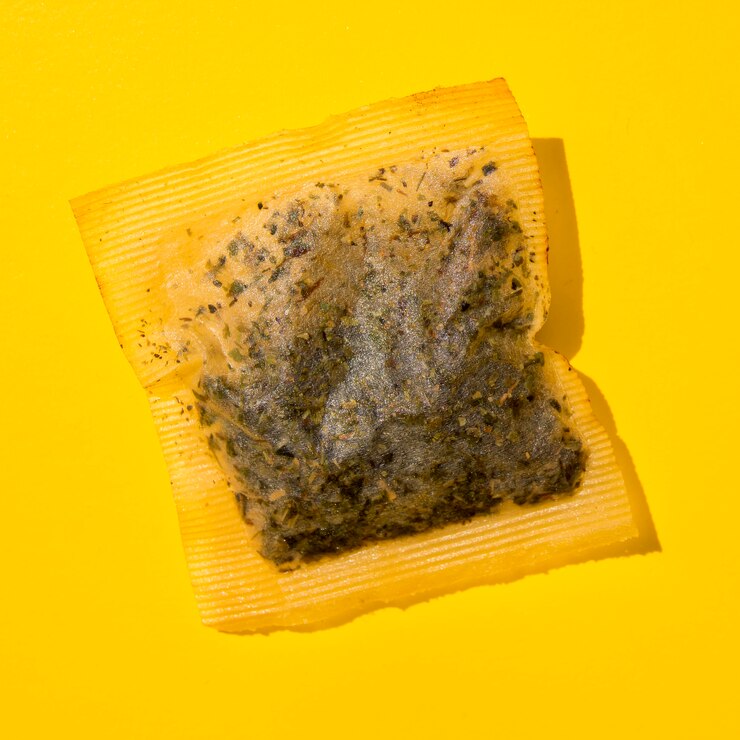
#5. Sugarcane Residue Packaging
Bagasse is the fibrous residue that remains after sugarcane stalks are crushed. This material is used to make items like takeout containers, plates, and bowls. Bagasse is 100% compostable and a better option for food packaging.
Benefits
- By-product use: Repurposes agricultural waste, reducing overall resource consumption.
- Compostable: Naturally decomposes in a compostable environment.
- Heat-resistant: Bagasse can withstand high temperatures, making it suitable for hot food.
Challenges
- Cost: The initial production cost is higher compared to conventional plastics.
- Composting Requirements: These products require access to industrial composting facilities to decompose effectively.
Industrial Use
KFC and McDonald’s are two fast-food giants using bagasse-based products to reduce their carbon footprint, especially in regions where single-use plastics are banned.
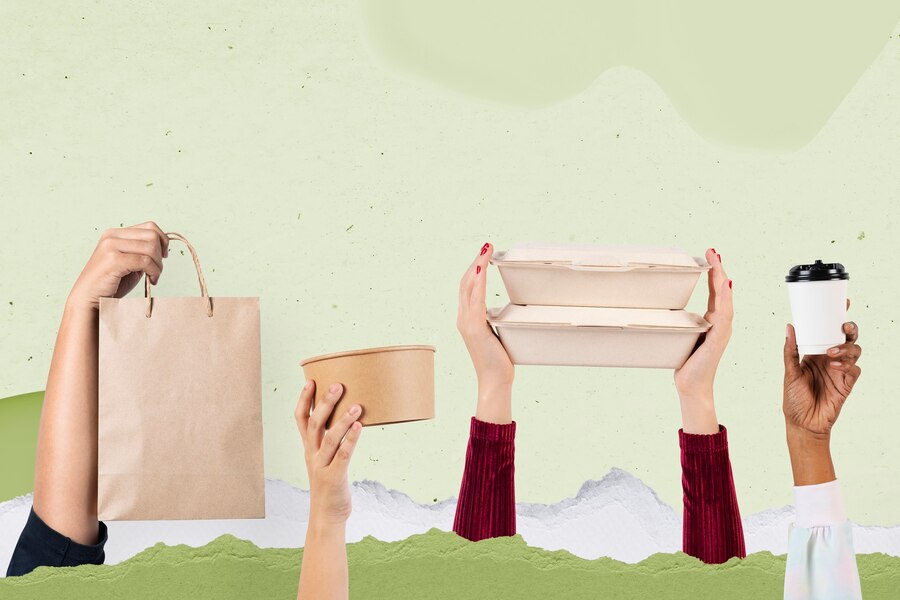
#6. Biodegradable Packaging Peanuts
Biodegradable packing peanuts are often made from cornstarch. They are a better alternative to conventional Styrofoam peanuts used in shipping. These peanuts are non-toxic and easily dissolve when exposed to water.
Benefits
- Environmentally Safe: They easily dissolve in water and are entirely harmless to aquatic ecosystems if accidentally released into the environment.
- Reusable: These peanuts can be reused for future packaging needs.
- Non-toxic: Safe to use with food products and does not contain harmful chemicals.
Challenges
- Less Durable: Biodegradable peanut packaging may not offer the same level of durability as conventional Styrofoam when protecting fragile items.
- Limited Use: It is mainly used for shipping and not typically for direct food packaging.
Market Insight
E-commerce companies are adopting biodegradable peanuts to reduce plastic packaging waste.
#7. Plant-Based Plastics (Bioplastics)
Bioplastics, unlike petroleum-based plastics, are made from renewable biomass sources such as cellulose, corn starch, or sugarcane. A 2024 study suggests that plant-based plastics can be either compostable or biodegradable, depending on their composition.
Benefits
- Reduced Carbon Footprint: Compared to conventional plastics, bioplastics have a lower carbon footprint.
- Versatile: Bioplastics can be used for various food packaging applications, including bags, bottles, and containers.
- Biodegradable/Compostable Options: Some bioplastics are designed to biodegrade or compost under specific conditions.
Challenges
- Composting Requirements: Many plant-based plastics require industrial composting facilities to fully decompose, which remains a challenge as these facilities are not widely available.
- Food Production Competition: The use of agricultural products like corn for bioplastics could impact the food supply.
Industry Adoption
Coca-Cola is one of the companies that has introduced plant-based plastic bottles, partially made from sugarcane. The company aims to reduce plastic waste through the use of bioplastics.
Learn More: 10 Sustainable Food Practices Examples: A Comprehensive Guide to Green Living
#8. Hemp Packaging
Hemp is a natural material used in producing textiles, paper, and now, there used in making fine packaging alternatives to replace plastics. Durable and biodegradable hemp fibres can be moulded into packaging products like containers, boxes, and trays.
Benefits
- Biodegradable: Hemp-based products are 100% biodegradable and will fully decompose in 3 to 6 months.
- Sustainable Crop: Growing hemp requires less water, making it an environmentally friendly option for large-scale production.
- Durability: Hemp packaging is more durable than conventional plastics.
Challenges
- Legal and Regulatory Issues: Hemp is still subject to regulatory restrictions in various regions of the world due to its association with cannabis.
- Scaling: Large-scale production of hemp packaging is still in its early stages.
Innovative Application
Hemp-based packaging is gaining popularity in the cosmetic industry, with brands like The Body Shop incorporating it into their green packaging initiatives.
#9. Palm Leaves
Palm leaves, specifically from the areca palm, are being used to produce eco-friendly tableware such as plates, cutlery, and bowls. Palm leaves are sustainably sourced, as they naturally fall off the areca palm tree.
Benefits
- Completely Natural: Palm leaf products are biodegradable and decompose fully within a short period.
- Durable and Heat-Resistant: Palm leaf packaging materials can withstand hot and greasy foods.
- Low Energy Production: Palm leaf products require minimal processing, with no chemicals or additives used.
Challenges
- Availability: Areca palm leaves are not as widely available as other eco-friendly materials.
- Cost: Palm leaf products can be quite expensive compared to petroleum-based plastics due to the manual labour involved in their production process.
Industry Application
Eco-conscious restaurants and catering services are increasingly using palm leaf tableware as an alternative to plastic or Styrofoam, especially in eco-tourism hotspots like India and Southeast Asia.
#10. Coconut Husks
Coconut husks are a by-product of the coconut industry, and they are being repurposed to create sustainable packaging materials. Whole Tree is one of the companies using coconut shells to produce durable, biodegradable packaging as an alternative to plastics.
Benefits
- Renewable Resources: Coconut husks, typically waste products, are transformed into sustainable packaging options, helping to reduce waste.
- Biodegradable: Coconut-based packaging is fully biodegradable and decomposes naturally.
- Durable: Packaging made from coconut husks is impact-resistant, making it a durable option for protecting food products.
Challenges
- Limited Applications: Coconut husks are not yet suitable for every type of food product.
- Regional Availability: These materials are primarily available in tropical regions, which could limit their widespread adoption.
Market Insight
Companies committed to sustainable packaging are exploring coconut husks as a potential material to replace plastic packaging. Brands leading this transition are mostly located in regions where coconut production is high, such as Southeast Asia and the Caribbean.
Key Considerations for Businesses Transitioning to Eco-Friendly Packaging
Transitioning to eco-friendly packaging can be challenging for businesses, but it is increasingly necessary to meet both consumer demand and regulatory requirements. Here are some key considerations for businesses looking to make the switch:
- Cost Analysis: The initial cost of eco-friendly packaging options can be high, but it’s worth the investment. Opting for green packaging can enhance a brand’s reputation and ensure compliance with environmental regulations.
- Consumer Education: Businesses must educate consumers on how to properly dispose of eco-friendly packaging, especially for materials that require industrial composting.
- Supply Chain Impact: Switching to green packaging options can affect the entire supply chain, from sourcing raw materials to logistics. Brands must work closely with suppliers to ensure a smooth transition from conventional plastics to sustainable packaging options.
- Certifications: Always look for certifications like FSC (Forest Stewardship Council), BPI (Biodegradable Products Institute), and OK Compost to verify the sustainability of packaging materials.
Global Trends and Regulations-Driven Eco-Friendly Packaging
Plastic pollution continues to affect every corner of the planet, and this has led governments around the world to implement strict regulations on plastic use. Strict decisions to ban plastic use are accelerating the adoption of eco-friendly packaging. Some notable global initiatives include:
- European Union: The Single-Use Plastics Directive aims to reduce global plastic waste by placing strict bans on certain single-use plastic products.
- United States: According to a 2024 report, California and New York are among the states that have introduced bans on plastic bags and other single-use plastic items. This initiative encourages businesses to seek eco-friendly alternatives.
- Asia: India and Indonesia are among the Asian nations implementing strategies to reduce plastic waste. They have been promoting biodegradable packaging materials, such as palm leaves and seaweed.
Conclusion: A Path Forward for Sustainable Packaging
Eco-friendly packaging is not just a trend; it’s a necessity for the future of our planet. As consumers and businesses become increasingly aware of the environmental impact of plastic waste, the demand for sustainable alternatives will continue to grow. By adopting materials such as mushroom packaging, corn starch, and hemp, we can significantly reduce the amount of waste sent to landfills and protect our ecosystems for future generations.
Whether you’re a business looking to reduce your environmental footprint or a consumer seeking to make more sustainable choices, switching to eco-friendly packaging materials is a crucial step in the right direction. While the transition to sustainable packaging comes with challenges, the long-term benefits far outweigh the initial investment. By embracing these innovative materials, we can make meaningful progress toward a more sustainable future.

